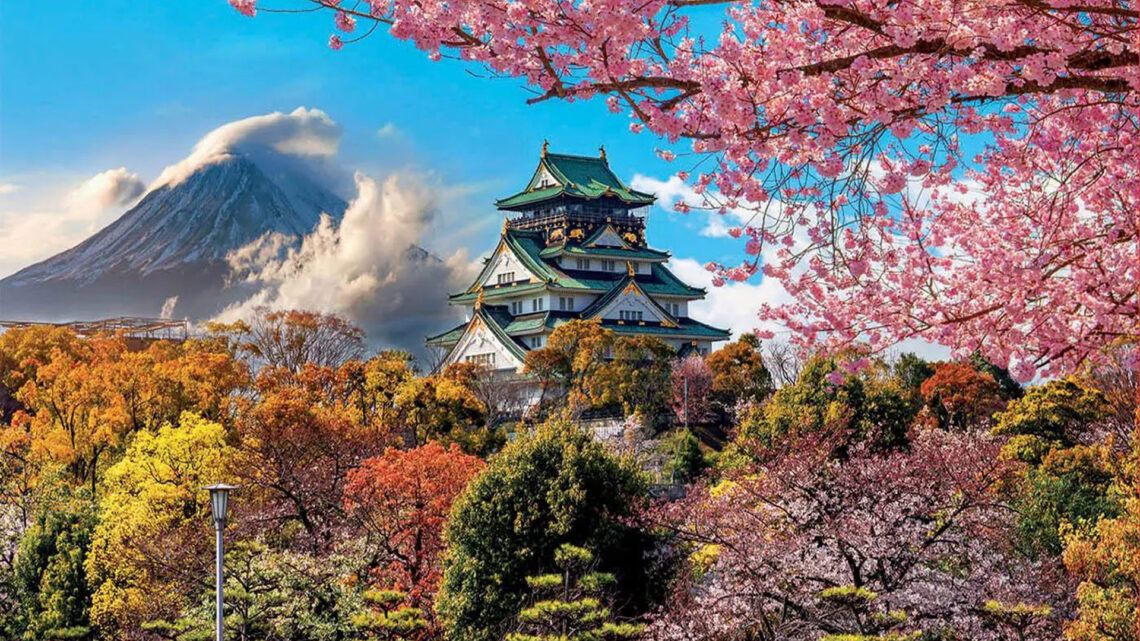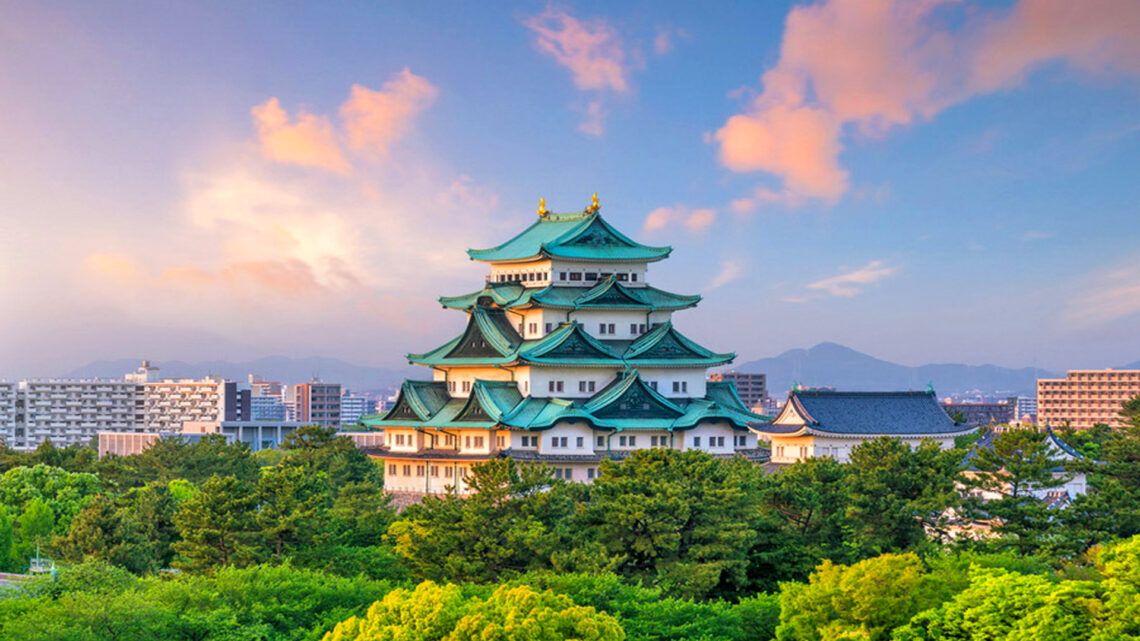
The city of Kanazawa in Ishikawa Prefecture unfolds its fascinating beauty in a symbiosis of traditional Japanese elegance and modern sophistication. Often referred to as the “Cultural Heritage of the Samurai,” the city attracts visitors with its rich history, breathtaking gardens, and a culinary scene that enchants the palate. Join me on a discovery journey through the streets of Kanazawa, where tradition and modernity harmoniously blend. Kanazawa is also not an open-air museum in the conventional sense. Instead, it is a historically preserved city with a significant past that has been retained into the present.
Once an important Samurai stronghold, Kanazawa takes pride in its well-preserved history today. The Nagamachi district, once home to the Samurai, transports visitors back to the feudal era of Japan. Narrow alleys, ancient residences, and the scent of cherry blossoms evoke a sense of nostalgia. The Kenrokuen Garden, one of the most famous in Japan, offers a visual feast with its six different perspectives perfectly capturing the changing seasons.
Kanazawa is a haven for lovers of craftsmanship. The art of Kutani-Yaki, one of the oldest porcelain styles in Japan, thrives here. Visit the workshops to witness artists creating these exquisite porcelain pieces often adorned with vibrant colors and intricate designs. Equally fascinating is Kaga-Yuzen, a traditional dyeing technique for kimonos. The intricate patterns and craftsmanship are a true delight for the eyes.
Kanazawa takes pride in its culinary tradition, ranging from fresh seafood to delicate sweets. The Omicho Market, also known as the “Kitchen of Kanazawa,” offers an abundance of seafood, rice, and fresh vegetables. Be sure to try Kaisen-don, a bowl of rice topped with a variety of fresh raw fish capturing the essence of the region. For those with a sweet tooth, the gold-leafed sweets known as “Hakuichi” are an absolute must.
Despite its historical roots, Kanazawa has successfully catapulted into modernity. The 21st Century Museum of Contemporary Art is an architectural masterpiece that blurs the boundaries between art and observer. Interactive exhibitions and installations by renowned artists from around the world make a visit to the museum an unforgettable experience.
In Kanazawa, time melds, shaping a city rooted in the past yet facing towards the future. The collection of treasures, whether in the form of traditional craftsmanship or modern art, reflects the richness of the city. Kanazawa is not just a place to visit; it is an experience that engages the senses and leaves a lasting impression. Get ready for a journey that transcends the boundaries of time and space as you explore the beauty of Kanazawa.
The Splendid Surroundings of Kanazawa
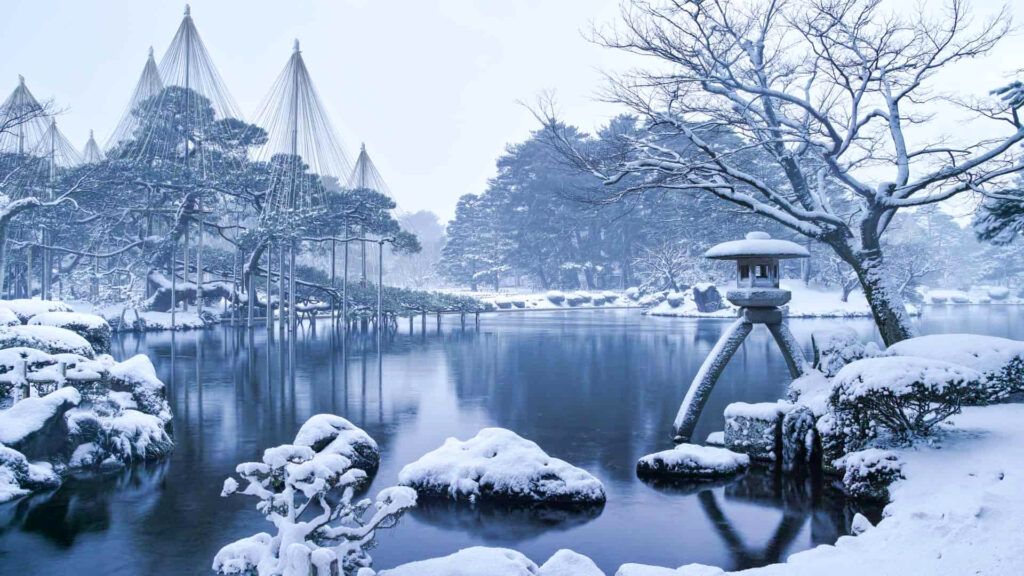
The surroundings of Kanazawa in Ishikawa Prefecture transport visitors to a world of contrasts and beauty. This region of Japan is distinguished not only by its historical landmarks but also by the breathtaking nature that envelops it. In this article, we delve deep into the fascinating surroundings of Kanazawa and discover what makes this region so unique.
Kanazawa is characterized by a landscape shaped by mountains, rivers, and picturesque coastlines. The nearby Hakusan National Park, with the majestic Hakusan Mountain as a backdrop, offers endless opportunities for hikers and nature enthusiasts. The clear mountain lakes and lush forests create an idyllic setting, revealing a different charm in each season.
Away from the capital, the fascinating culture and way of life unfold in the traditional villages of the surroundings. One such village is Shirakawa-go, a UNESCO World Heritage site known for its Gassho-Zukuri farmhouses. This unique architecture, featuring steep, thatched roofs, withstands winter snow masses and provides a captivating glimpse into the past.
The coast of Kanazawa is marked by rugged, wild beauty. Along the Noto Peninsula, charming fishing villages are characterized by traditional boats and the fresh offerings of the Sea of Japan. The sight of the sunset over the open ocean is an unforgettable experience.
The natural beauties around Kanazawa encompass an impressive variety of landscapes that captivate every nature lover. The Hakusan National Park surrounding the region is a true paradise for those yearning for untouched nature. The majestic Hakusan Mountain, known as the “White Mountain Range,” towers over the scenery, not only providing an imposing backdrop but also offering numerous hiking opportunities for adventurers.
The mountain lakes rising in the shadow of Hakusan seem like hidden jewels amidst the green forests. One of these lakes is the enchanting Midori-ike, its calm water surface surrounded by lush woods. In the spring months, delicate cherry blossoms reflect in the clear water, while in autumn, the foliage unfolds a colorful spectacle. The natural beauties of Kanazawa thus serve as an ode to the changing seasons.
The green forests of the Hakusan National Park are not only a visual delight but also home to a rich diversity of plants and animals. During a hike through the dense woods, one may encounter elusive deer, colorful birds, and even rare plant species. The nature in this region is carefully preserved, and visitors have the opportunity to immerse themselves in pristine wilderness and breathe the refreshing mountain air.
In addition to the majestic mountains and forests, the coast of Kanazawa is a natural spectacle in itself. The Noto Peninsula stretches gracefully into the Sea of Japan, offering a rugged yet impressive coastal landscape. Rocky cliffs rise high, while the deep blue water crashes against the shoreline. Coastal walks not only provide spectacular views but also allow the enjoyment of the invigorating sea breeze.
The natural beauties of Kanazawa transport visitors to a world of serenity and grandeur. The connection between the majestic mountains, clear mountain lakes, dense forests, and the wild coast makes this region a true treasure of nature. Those who visit Kanazawa not only experience the cultural splendor of the city but also the incomparable beauty of its natural surroundings.
Art and Architecture in Kanazawa

Kanazawa not only dazzles with natural beauty but also with artistic finesse. Modern architecture, such as the 21st Century Museum of Contemporary Art, seamlessly blends into the surroundings, providing a creative counterpoint to the historical sites. The surroundings of Kanazawa become a canvas where tradition and modernity dance together.
Often referred to as “Little Kyoto,” Kanazawa impresses with well-preserved neighborhoods and traditions. The city’s historical backdrop creates a unique atmosphere that inspires artists and architects alike. The alleys of Higashi Chaya, a historic geisha district, are lined with old wooden houses preserving the elegance of the past.
A gem in Kanazawa is undoubtedly Kenroku-en, one of Japan’s three famous gardens. The curved paths, ponds, and bridges create a harmonious connection between architecture and nature. These landscape gardens are true masterpieces, reflecting the aesthetics of the Edo period.
For those who appreciate contemporary art, the 21st Century Museum of Contemporary Art is a must-visit. The unique architecture of this museum attracts art lovers from around the world. With transparent walls, it seamlessly integrates into the surrounding landscape, creating a fascinating connection between indoor and outdoor space.
Traditional craftsmanship also flourishes in Kanazawa. Here, you’ll find the famous Kaga-Yuzen fabrics, intricately crafted kimonos, and ceramics that reflect the region’s heritage. The small workshops and shops in the Nagamachi and Kazuemachi districts allow visitors to immerse themselves in the world of craftsmanship.
Kanazawa has a centuries-old history reflected in the city’s streets. The city flourished during the Edo period, becoming a center for arts and crafts. Samurai and geishas shaped the cityscape, and their influences are still palpable today. Traditional tea houses, historical districts, and magnificent gardens testify to the elegance of bygone eras.
One of the most fascinating crafts cultivated in Kanazawa is Kaga-Yuzen. This silk painting art has a long tradition, passed down by masters of the craft. Artists use a special technique to transfer vibrant colors onto silk, creating intricate patterns. The motifs are often inspired by nature, ranging from flowers and birds to scenic depictions. A stroll through the Higashi-Chaya district leads to workshops where this craftsmanship comes to life. Visitors can watch artists at work, applying brushes and colors to silk with the utmost precision. The fine details and impressive color palette make each piece a work of art.
Another outstanding craft in Kanazawa is the production of Wajima-nuri, traditional lacquerware from the city of Wajima in Ishikawa Prefecture. This craftsmanship is known for its elegance, durability, and artistic embellishments. The techniques have been perfected over generations and are now an integral part of local culture. The production of Wajima-nuri is an intricate process. Wood is first carved into the desired shape, then coated with multiple layers of lacquer and polished to create a shiny surface. Artists add extra shine to the pieces through Maki-e, a technique of applying gold or silver dust. Themes range from traditional patterns to modern designs, and each lacquerware tells its own story.
Kanazawa is also proud to host the famous Kutani-yaki porcelain production. This art form has its roots in the 17th century and is known for its vibrant colors and intricate patterns. The making of Kutani-yaki requires not only craftsmanship but also artistic creativity.
In Kanazawa’s workshops, visitors can observe craftsmen at work, shaping, painting, and glazing the clay. The use of overlapping layers of color gives the porcelain a unique depth and brilliance. From tea sets to elaborate vases, Kutani-yaki reflects the skill and sophistication of Kanazawa’s craftsmen.
The traditional craftsmanship of Kanazawa is a treasure that shapes the cultural identity of this city. From silk painting to lacquerware to porcelain, each craft tells a story of dedication, tradition, and innovation. When visiting Kanazawa, let yourself be enchanted by the beauty of these artworks and immerse yourself in the rich history that has shaped this city. Kanazawa is not just a city but a living museum of traditional craftsmanship, capturing the essence of Japan in a unique way.
The Nomura Samurai Residence in Kanazawa

The Nomura Samurai Residence, an impressive example of samurai architecture, provides insight into the life of the warrior class during the Edo period. The magnificent rooms, gardens, and defense structures showcase the refined craftsmanship of this era. Also known as Nomura-ke, the Nomura Samurai Residence was built in the 16th century and once served as the residence of the highly esteemed Nomura samurai. This warrior class played a crucial role in Japanese history, and their influence spanned centuries. Today, the residence offers a fascinating glimpse into the life and customs of this captivating era.
The entrance of the residence welcomes visitors with an impressive gate adorned with intricate carvings and traditional patterns. It is evident here that the Nomura Samurai Residence is a place of elegance and sophistication. The sound of crunching gravel paths under the footsteps of visitors enhances the atmosphere of the past, giving the feeling of walking through the centuries.
The residence consists of several interconnected buildings, each telling its own story and providing a unique insight into the lifestyle of the Nomura samurai. As one strolls through the rooms, the splendid Shoji sliding doors catch the eye, adorned with delicate wood carvings and hand-painted motifs. These artistic doors served not only as room dividers but also as expressions of wealth and artistic skill.
A highlight of the Nomura Samurai Residence is the impressive garden that harmoniously blends into the surroundings. Carefully designed ponds, lush bonsai trees, and traditional stone lanterns can be found here. The combination of nature and architecture creates a enchanting backdrop that transports the visitor to another time. The garden of the residence is not only a place of tranquility but also one of inspiration and contemplation.
During the tour of the residence, one delves deeper into the history of the Nomura samurai. Exhibition rooms showcase antique armors, weapons, and intricate artifacts. This collection not only illustrates the craftsmanship of these warriors but also their cultural significance. Every detail contributes to deepening the fascination for the Nomura samurai and their era.
It is impressive to see how the Nomura Samurai Residence transports its visitors to a long-gone era. The careful preservation and presentation of this historical heritage make this place a must-visit for those who want to experience Japan in all its glory. The Nomura Samurai Residence in Kanazawa is not only an architectural gem but also a living monument to the rich history and tradition of Japan.
Tea Houses and the Art of Tea Ceremony
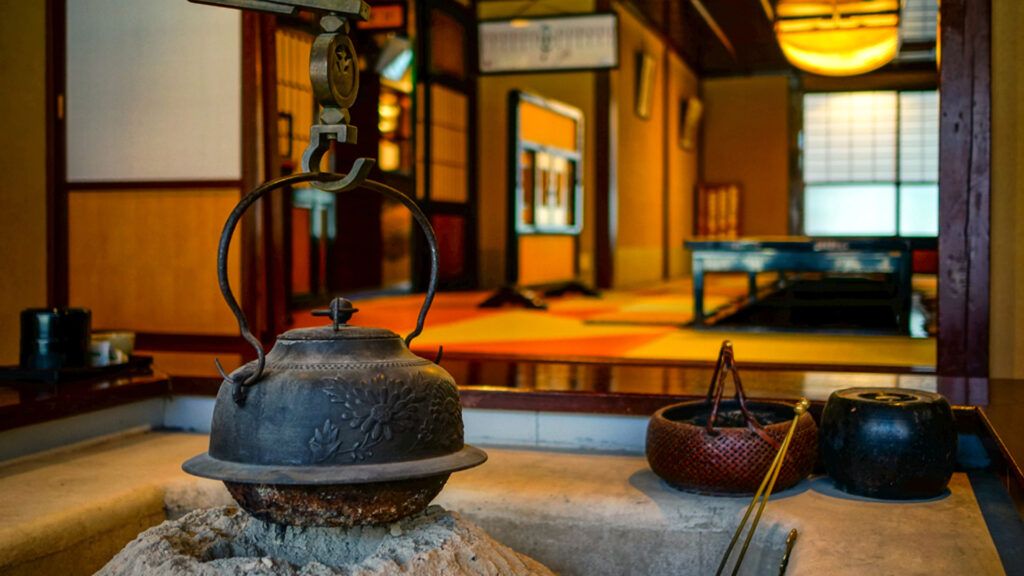
The art and architecture of Kanazawa are closely tied to the traditional tea ceremony. The city is home to a variety of tea houses, including Myoryu-ji, also known as “Ninjadera” – a temple with astonishing defense mechanisms.
Kanazawa, a city in western Japan, is renowned not only for its elaborate gardens and historical landmarks but also for its traditional tea houses, providing a unique insight into Japanese tea culture. These tea houses bear witness to a centuries-old tradition in which the tea ceremony plays a significant role.
The tea ceremony, or “Sado,” is much more than just drinking tea. It is a spiritual practice based on the teachings of Zen Buddhism, emphasizing harmony, respect, purity, and silence. The art of the tea ceremony is particularly celebrated in Kanazawa, and numerous masters of this art dedicate themselves to perfecting every detail.
In Kanazawa, there is an impressive variety of tea houses, ranging from historical sites to modern interpretations. One of the most notable is the “Urasenke Chanoyu Kaikan,” a place accessible to both beginners and experienced tea enthusiasts. Here, visitors can not only experience the tea ceremony but also learn the art of tea preparation.
However, the tea houses in Kanazawa impress not only with their ritual significance but also with their architecture. The buildings often follow the traditional style, featuring tatami mats, sliding doors, and a touch of Zen aesthetics. Some tea houses also offer modern interpretations of this architectural heritage, resulting in a fascinating blend of old and new.
Kanazawa not only provides the opportunity to savor exquisite tea but also to delve into the profound world of the tea ceremony. The city’s tea houses are places of tranquility, exchange, and reflection, capturing the essence of Japanese culture. If you ever have the chance to visit Kanazawa, don’t forget to explore these unique tea houses and experience the art of the tea ceremony in its full splendor.
Culinary in Kanazawa: A Delight for the Senses
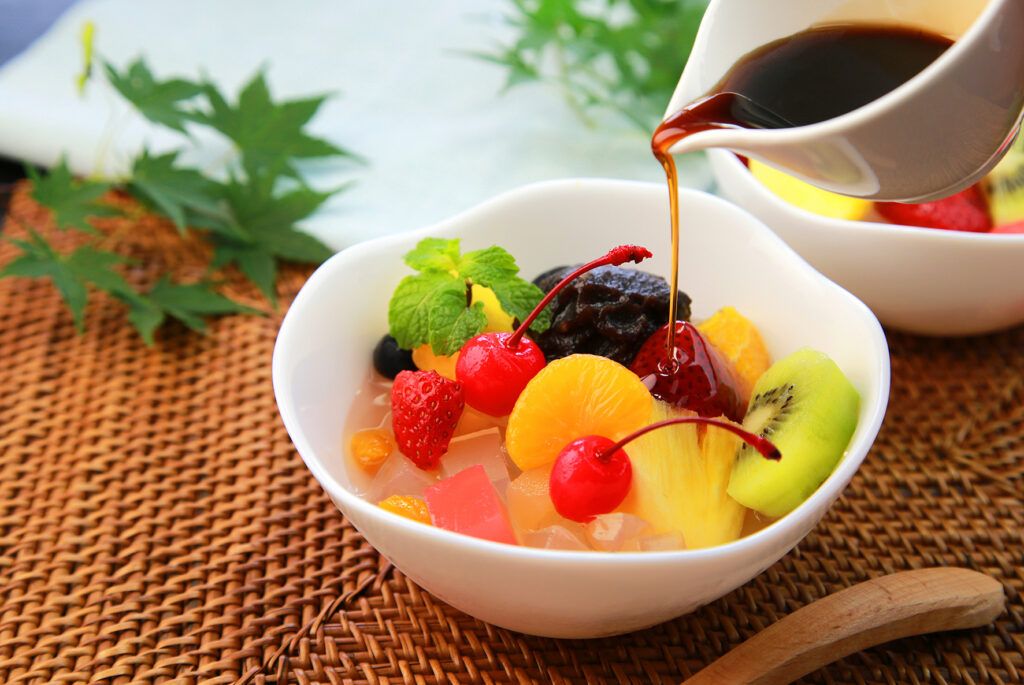
The surroundings of Kanazawa not only shape the landscape but also influence the culinary scene. The fertile soils provide fresh ingredients that local chefs skillfully transform into masterpieces of Japanese cuisine. Indulge in local delicacies such as Kaga beans and flavorful dishes that reflect the diversity of the region.
Kanazawa, a city rich in history and traditions, captivates not only with its architectural beauty but also with a fascinating culinary scene. Here, the flavors of seafood from the Sea of Japan merge with the fresh products from the surrounding mountains. Join us in exploring the world of gastronomic delights that Kanazawa has to offer.
Let’s start with the jewel of Japanese culinary art – Kaiseki. In Kanazawa, this art form reaches new heights. The master chefs here skillfully combine local ingredients into a true feast for the senses. The golden leaf, a symbol of the city, is not only found in crafts but also on the plates. The presentation of the dishes is as artful as the traditional crafts of the region.
The proximity to the sea makes Kanazawa a paradise for sushi lovers. Here, not only are traditional sushi variations celebrated, but innovative creations are also served. Seafood delicacies are expertly crafted into small works of art by experienced sushi masters. A delight that highlights the freshness and quality of regional seafood.
The local Yatai, or street stalls, are another highlight of culinary discoveries in Kanazawa. Here, flavors and aromas merge into a tempting duet. Try local specialties such as “Jibuni” – a stew with chicken and roots that takes you straight to the heart of regional cuisine.
Ishikawa Prefecture is known for its high-quality sake breweries, and Kanazawa is no exception. Take a trip to the region’s breweries, where you can not only learn about the art of sake production but also participate in tastings. From fruity and floral to bold and spicy notes – the diversity of sake reflects the craftsmanship of the brewers.
The Omicho Market is a lively meeting place for food enthusiasts and a melting pot of flavors. Fresh fish, seasonal vegetables, and local specialties characterize the scene of this bustling marketplace. Enjoy the atmosphere as you sample from stand to stand. Here, you experience Kanazawa’s culinary diversity up close.
The art of Wagashi-making, traditional Japanese sweets, achieves special finesse in Kanazawa. Inspired by the natural beauty of the surroundings, these sweets not only reflect the taste but also the aesthetics of the seasons. Try the artistically crafted sweets and be enchanted by the creativity of the confectioners.
The culinary journey through Kanazawa would not be complete without a detour into the vibrant nightlife scene of the city. Visit Izakayas, cozy gastropubs, and try local beers and sake. The streetlights illuminate the alleyways as you savor small treats and experience the sociability of Japanese nights.
Kanazawa, in Ishikawa Prefecture, reveals a world of culinary wonders. From refined Kaiseki dishes to lively street markets – the diversity of flavors reflects the rich history and culture of this fascinating city. Immerse yourself and let Kanazawa’s culinary heritage seduce you.
This culinary journey through Kanazawa is just a taste of the diversity and sophistication that this city has to offer. Let yourself be tempted by the flavors and discover the treasures of Japanese cuisine in one of the most charming cities in the country.
My personal conclusion:
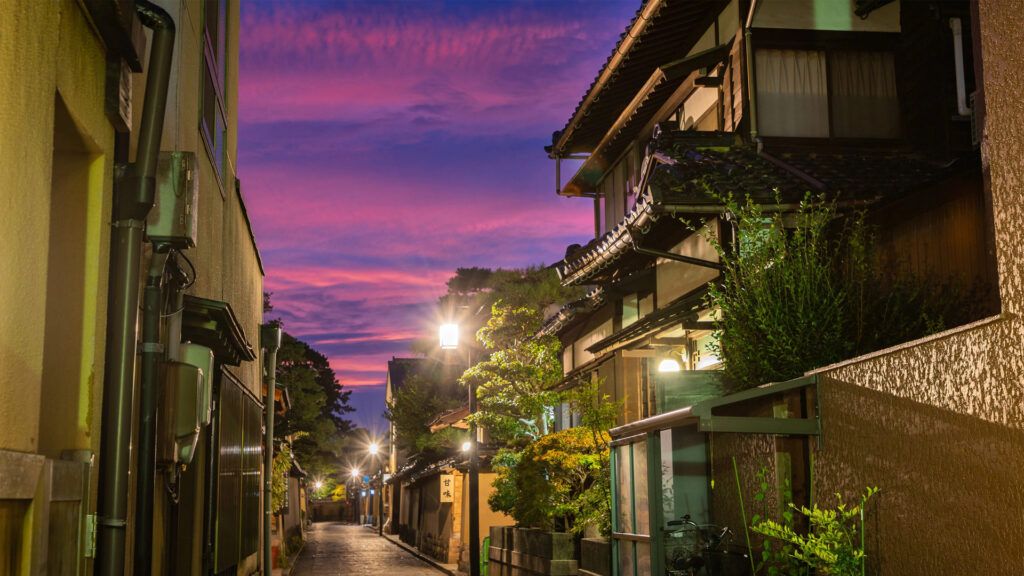
In Kanazawa, located in the Ishikawa Prefecture, I not only embarked on a culinary journey but also delved into the soul of Japanese culture. The city, rich in history and tradition, impressed me with its diversity of attractions and artistic masterpieces.
From the intricate Kaiseki menus to the lively Yatai stalls along the streets, Kanazawa offered me a palette of taste experiences that exceeded my expectations. The symbiosis of seafood from the Sea of Japan and fresh produce from the surrounding mountains is reflected in every bite.
Kanazawa in the Ishikawa Prefecture left a profound impression on me. The city fascinatingly combines traditional Japanese culture with a modern lifestyle. Historic districts like Higashi-Chaya and Nagamachi bear witness to the region’s rich history, while modern architecture and influences are present in the shopping streets and restaurants.
I was particularly impressed by the Kenrokuen Garden, one of the most beautiful landscape gardens in Japan. The carefully crafted ponds, bridges, and seasonal flower arrangements create an atmosphere of tranquility and beauty. The encounter with the traditional tea ceremony was a unique cultural experience that provided me with a deeper insight into the Japanese way of life.
The people in Kanazawa are warm and proud of their city. I enjoyed the local specialties, especially the fresh seafood at the Omicho Market and the delicious Ishikawa ramen. The blend of historical heritage and modern charm makes Kanazawa a place I would love to visit again. It was an unforgettable journey that deepened my love for Japanese culture.


